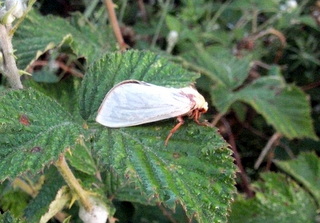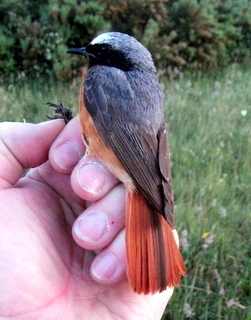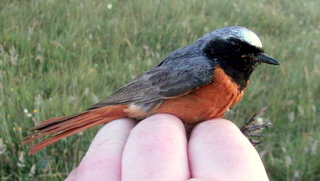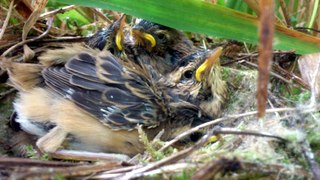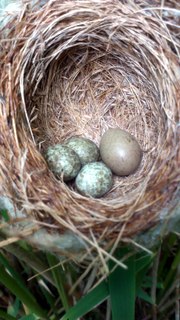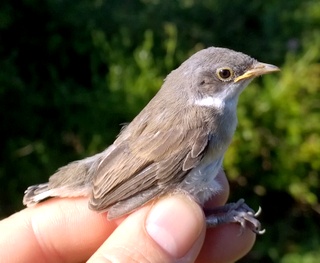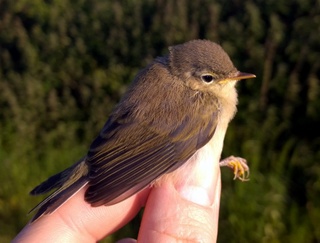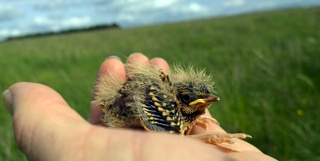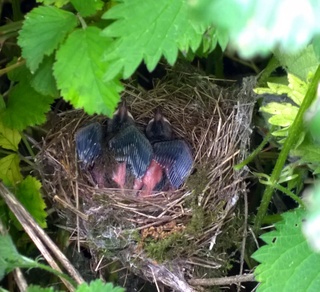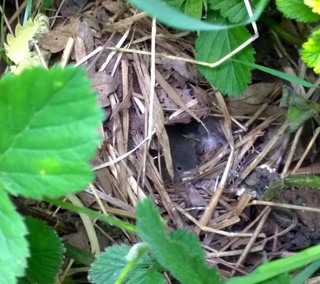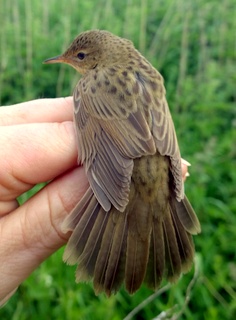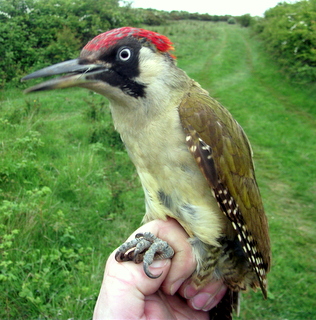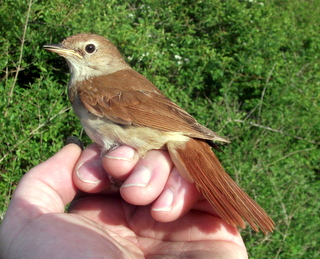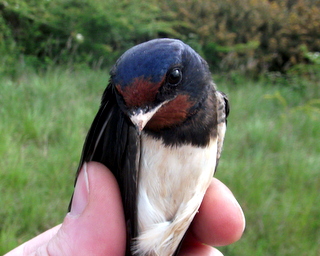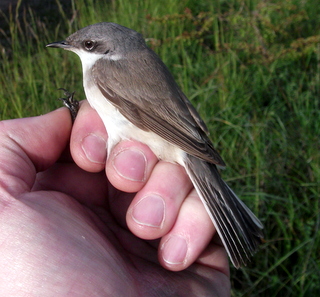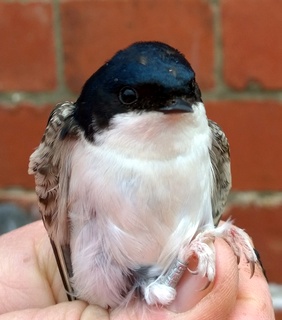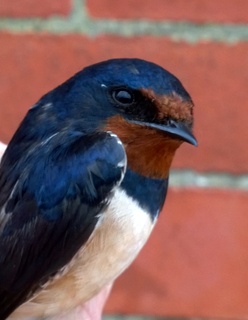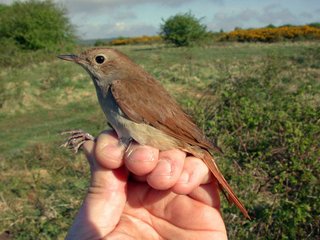SWINDON STW
After a great day out on the downs on Saturday when we ringed another 46 Tree Sparrows, 4 Swallows, 3 Little Owls and a brood of Blue Tits it was once again back to the serious science of CES at Swindon STW.
I was joined by Paul A and Simon at the horrible time of 4am and as we had a small team and the site is overgrown at the moment, we opted just to set the CES nets only.
After the incessant strong winds of May it was lovely to enjoy a warm, windless morning with bright blue sky. It was quite quiet for birds and Reed Warblers dominated once again with 15 caught including two from 2011 and two from 2013. We were delighted to see a pair of Swallows starting to build a nest in the ringing shed so we moved the ringing table away do that we could leave them in peace.
We caught the youngest Lesser Whitethroat that I have ever seen, it can only have been out of the nest for a week or so. There were a reasonable number of juveniles including four very young Chiffchaffs in one net.
This may have been Pauls last ringing session with us before he moves away which is a shame but we had a good laugh and he had the pleasure of the Matt and Simon humour show. MP, PA, SW
Reed Warbler 8 (7), Sedge Warbler 0 (2), Lesser Whitethroat 1 (1), Whitethroat 1 (1), Blackcap 2 (3), Chiffchaff 4 (1), Cettis Warbler 0 (1), Treecreeper 1, Greenfinch 3, Bullfinch 1 (3), Dunnock 6 (4), Robin 3, Blackbird 0 (3), Song Thrush 1, Goldfinch 0 (1), Blue Tit 1, Great Tit 4
SALISBURY PLAIN (centre)
With the weather still unsettled we got CES 4 out of the way on the 4th. Numbers were fairly unimpressive for the time of year but the catch did include a good number of 3J's with young Linnet, Chiffchaff, Willow Warbler, Robin, Blackbird, Song Thrush and Long Tailed Tit ringed.
A new female Lesser Whitethroat with brood patch was caught in scrub where a male had been singing for several weeks so hopefully they are making a breeding attempt and the breeding pair of Nightingale's were also retrapped while still it was still dark.
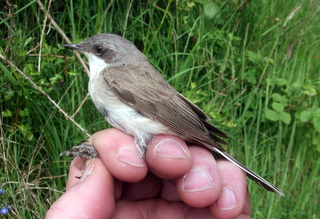
The Cuckoo from the previous visit was still knocking around and had a female following it around. This time we had the decoy but other than cuase some rather excited calling neither bird was interested in the net. GD, OF
Wren (1), Dunnock (5), Robin 4(1), Nightingale (2), Blackbird 2(1), Song Thrush 1(1), Lesser Whitethroat 2, Whitethroat 3(1), Garden Warbler (4), Blackcap 3(3), Chiffchaff 5(5), Willow Warbler 5(6), Long Tailed Tit 2(3), Blue Tit 8 pulli, Linnet 8(1), Bullfinch (1), Yellowhammer (1)
Back to today.....With CES out of the way we were finally able to get a visit to our secondary site on Salisbury Plain that is about 3km from our main ringing area. Here the scrub was once quite extensive and much younger than the main site but recent scrub clearance work here has destroyed the only other Nightingale territories on Salisbury Plain and cleared out the areas where Grasshopper Warbler numbers were particularly high. Even so, this area offers a good range of species in different population densities.
On arrival 2 Barn Owl's were flying around, 2 Grasshopper Warbler's were singing and up to 3 Cuckoo's were calling.
Despite only having 9 nets up we managed to catch far more than we have on our last few CES sessions with the number of Whitethroat's pleasingly high. We managed to catch one of the local Grasshopper Warbler's that hadn't been singing which was only our second of the year.
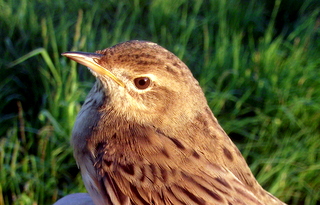
Last bird of the morning was a very nice male Stonechat which is not something we catch too many of.
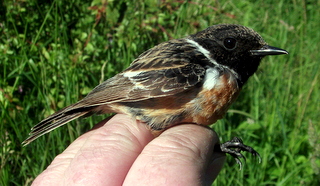
On the way off the Plain we ringed 3 broods of Swallow's from the artillery bunkers and a brood of Tree Sparrow's on the way home which in the end gave us a very productive morning. GD,PD
Swallow 14 pulli, Wren 4, Dunnock 4(1), Robin 2, Stonechat 1, Blackbird 3(1), Song Thrush 3, Grasshopper Warbler 1, Lesser Whitethroat 1, Whitethroat 17(1), Garden Warbler 1, Blackcap 9, Chiffchaff 1(2), Willow Warbler 1, Great Tit 1, Chaffinch 4, Goldfinch 1, Bullfinch 1, Tree Sparrow 6 pulli

